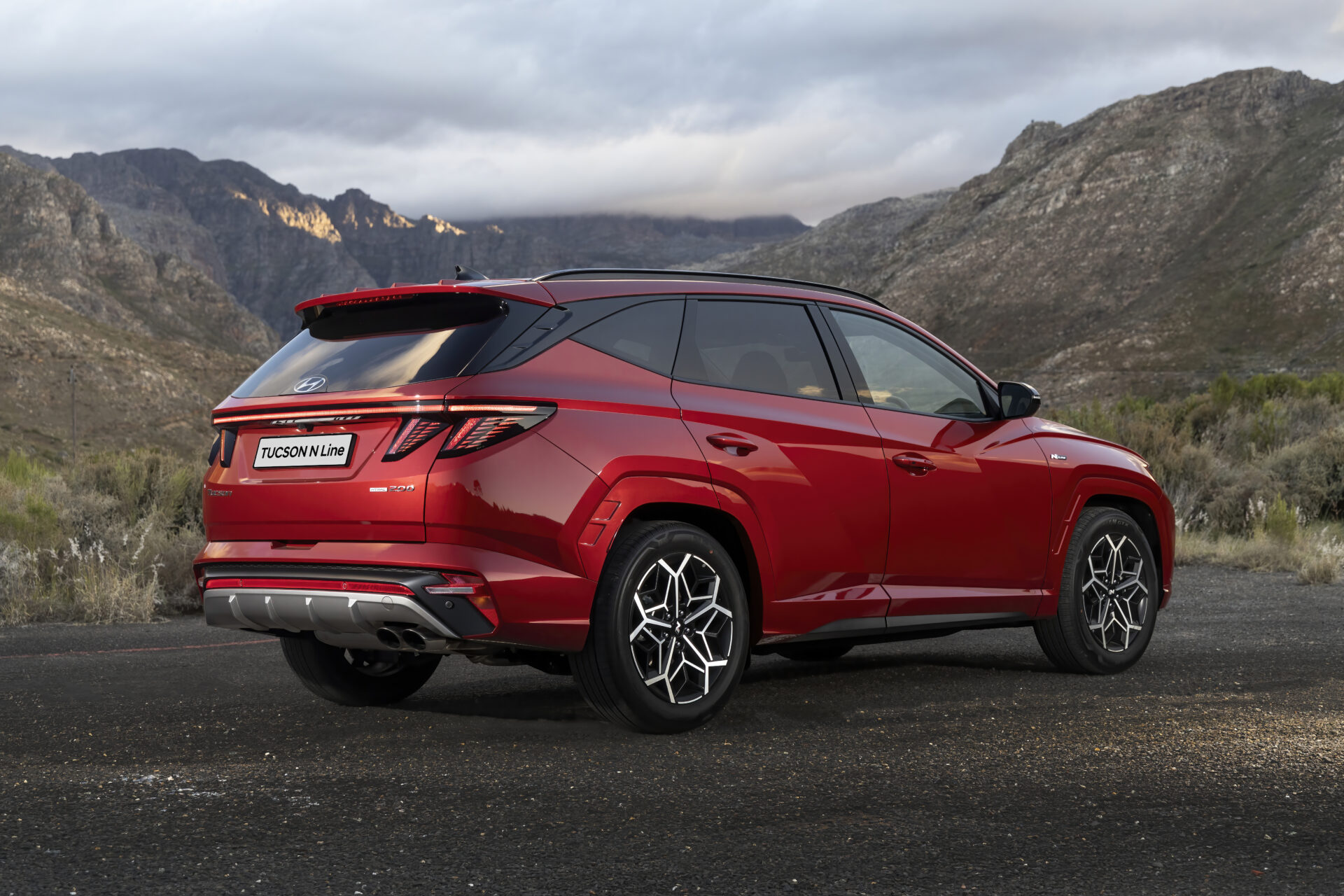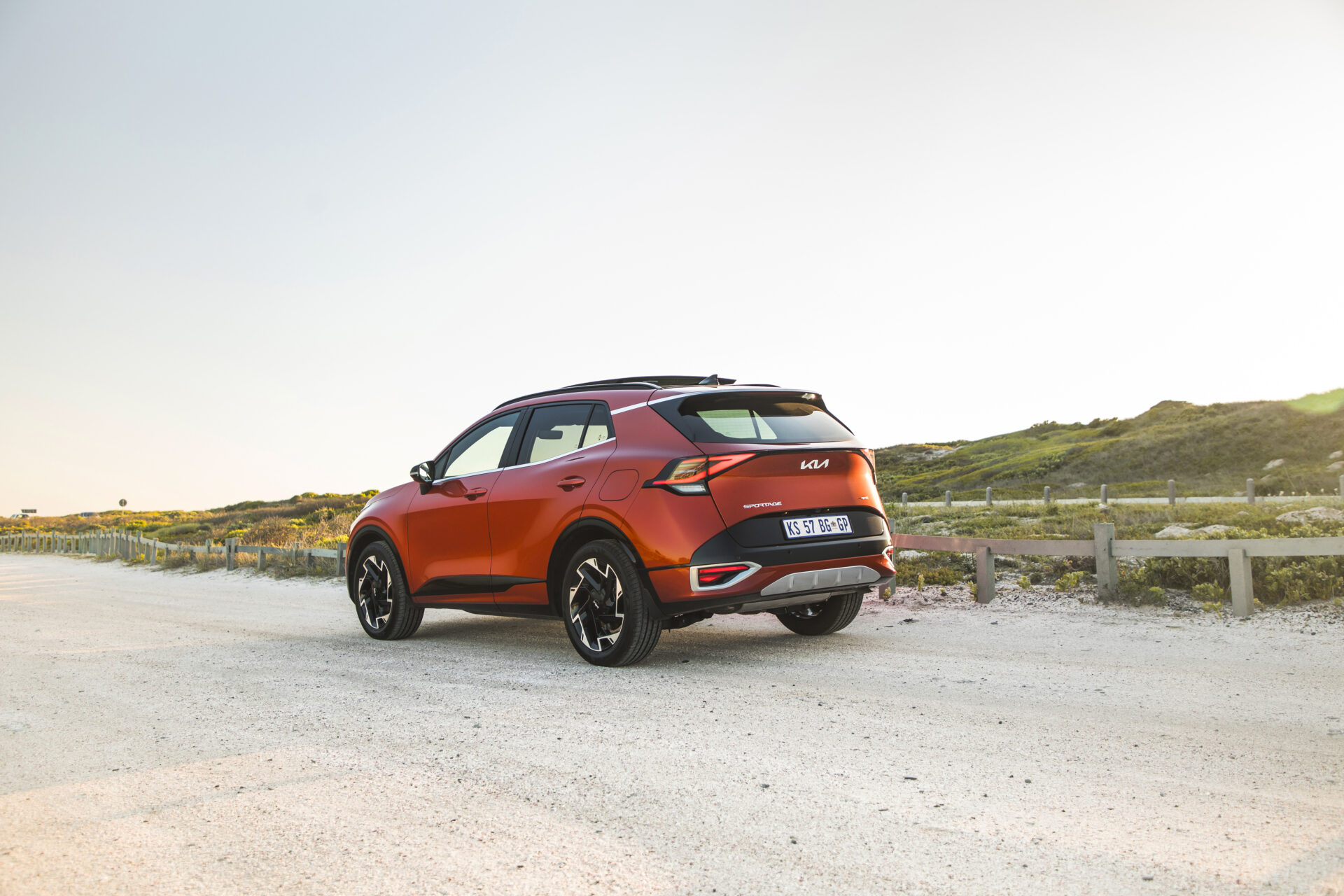By Kelly Fisher
Ten years ago Korean vehicles were being highlighted as the more pocket-friendly alternatives to the usual suspects in the market. Today, they are very much the vehicles of choice and the ones to beat. At least I think so. It surprises me to hear that some people still won’t consider the likes of Kia or Hyundai over a Japanese manufacturer. Please stick with me for the next couple of hundred words or so as I tell you why, in my opinion, a Korean option of whichever category you are shopping in should be the first thing you look at (except when it comes to sportscars, but that’s another story).
For this story, I am going to recall my experiences with two similar vehicles – one from Kia and one from Hyundai: the Kia Sportage 1.6 CRDI EX and the Hyundai Tucson 2.0D AWD N Line. This isn’t meant to be a comparative test, but seeing as how similar these two are, I probably can’t help myself.


The styling is really appealing
Out of these two, the Kia has always been more appealing in terms of styling. It has a sportier and more youthful look. The large Kia grille adds to its aggressive appearance as it conquers the roads, and overall, this SUV is designed to have an attractive shape.
Usually, I would say that a Tucson is not as good-looking as a Sportage, but in this N-Line spec, it certainly presents a compelling case for itself. The entire lineup recently received an update for the fourth generation, featuring new curves and edges that give the vehicle a more chiseled and sportier appearance. The N Line iteration stands out with squared-off wheel arches finished in body colour, a larger rear window spoiler, sporty twin-exit tailpipes, black mirror caps, dark window trims, and N Line badging both inside and outside.


It feels more sophisticated than ever before
Both Kia and Hyundai have come a long way in making their vehicles feel modern and sophisticated, especially on the inside. Both manufacturers ensure that not only are their vehicles loaded with great nice-to-haves as standard, but that they are presented in a package that feels classy.
The Sportage that we had on test comes with electrically adjustable driver’s seat, heated seats, a heated steering wheel (which was wonderful in the never-ending Cape Town winter), charging ports, Android Auto/Apple CarPlay, a reverse camera and more. A highlight for all who came onboard the Kia with me is the 12.3-inch touch screen that takes up a lot of room on the dashboard.
The Hyundai Tucson N Line that we spent a week with was similarly kitted out with a full-touch 8-inch infotainment, a wireless charging shelf for your mobile phone, wireless Android Auto and Apple CarPlay, and ventilated and heated seats in the front.


Safety is prioritised
Both Hyundai and Kia have focused a massive amount of effort and resources on ensuring that their vehicles meet high safety regulation standards across the world.
In the Tucson N Line, there are features such as smart cruise control that uses adaptive cruise control to automatically maintain a constant following distance from the car in front, blind-spot collision avoidance assist:, lane departure warning system, lane keep and lane follow assist, fatigue detection/driver attention warning, forward collision avoidance assist, rear cross traffic alert and rear cross traffic collision avoidance assist. This is in addition to the standard fitment of a variety of airbags and ISOFIX anchorages.
The Sportage comes with systems such as ABS, EBS, ESC, hill-start assist, downhill brake control and trailer stability assist. Kia notes that all models feature smart entry with push button start, as well as an electric parking brake with auto-hold functionality. All Sportage models also come equipped with six airbags and ISOFIX child seat anchors as standard.
Engines are stronger than ever
The Hyundai has the larger of the two engines with a 2.0 turbo diesel, while the Kia is a newly introduced 1.6 turbo diesel. The former is paired with an eight-speed automatic transmission and HTRAC All-Wheel Drive (AWD) system, and delivers 137 kW at 4 000 r/min and 416 N.m between 2 000 and 2 750 r/min. This 2.0-litre unit has a claimed consumption of 6.5-litres/100 km.
Under the bonnet of the Kia Sportage lies a 1,.6-litre turbo diesel engine that is paired with a seven-speed Dual Clutch Transmission (DCT). It pushes out 100 kW of power at 4 000 r/min, with 320 N.m of torque available between 2 000 and 2 250 r/min.
Verdict
As I mentioned at the start, this is not a comparison test. It’s my way of highlighting that either option is a good option – that Korean manufacturers have worked and still continue to work hard at delivering good quality vehicles – and these should definitely be on your list when shopping for a new car.
I enjoyed my time with both the Sportage and the Tucson and would honestly consider either one if my budget allowed and if this was the type of vehicle that I was looking for. That being said, the Tucson is the more expensive of the two at R799 900 for this N-Line iteration. This particular Kia Sportage has a recommended retail price of R663 995. So, go with your budget, but definitely give the Koreans your consideration.